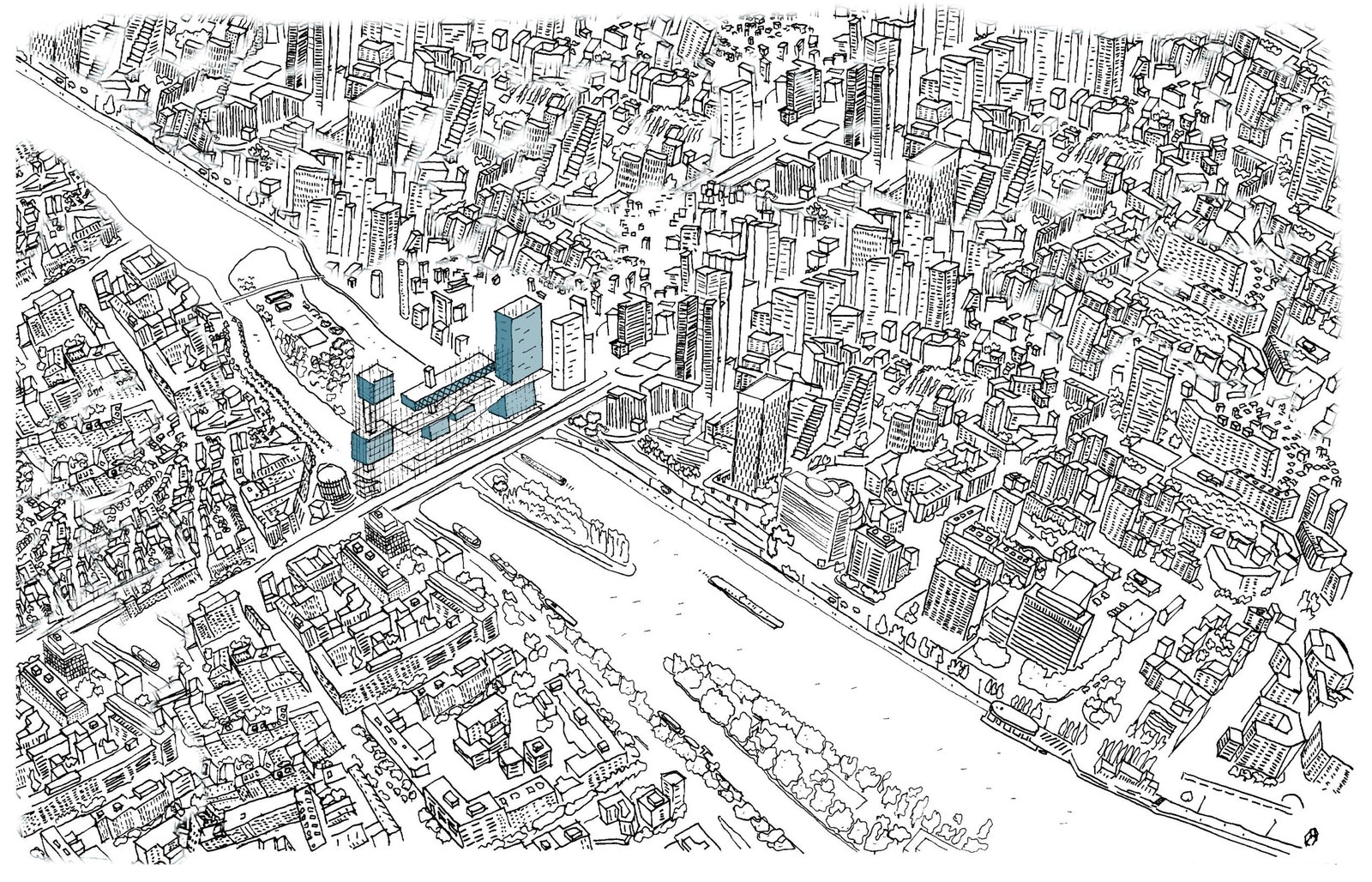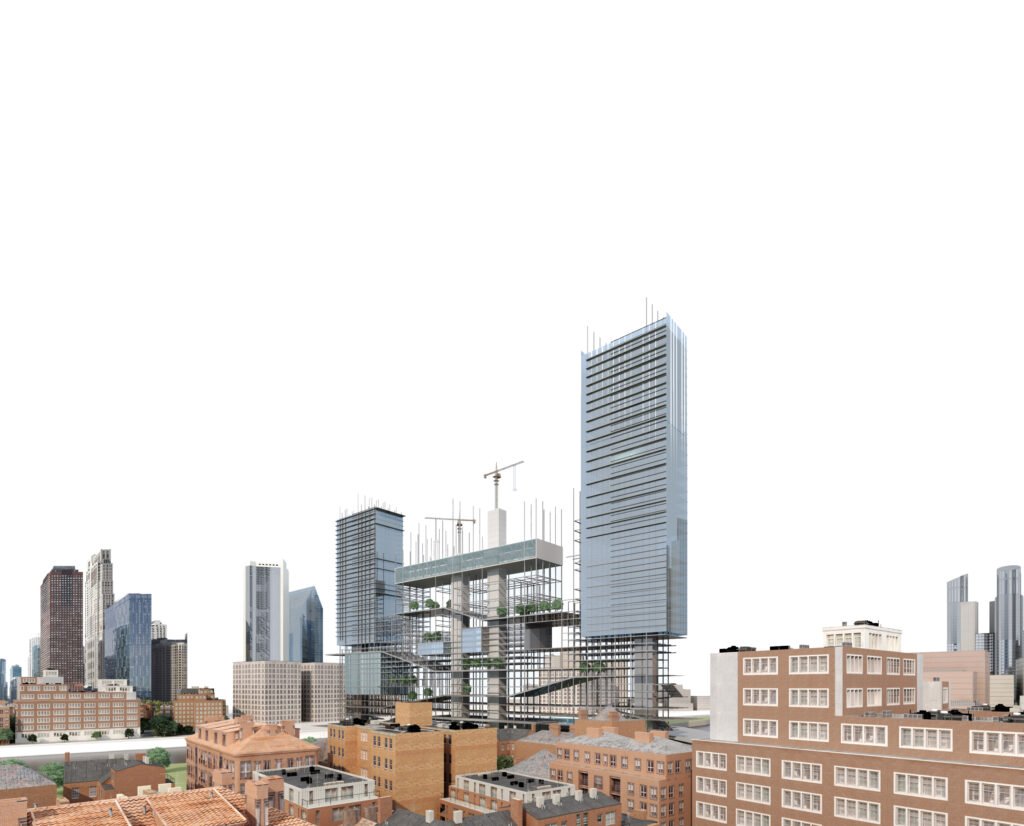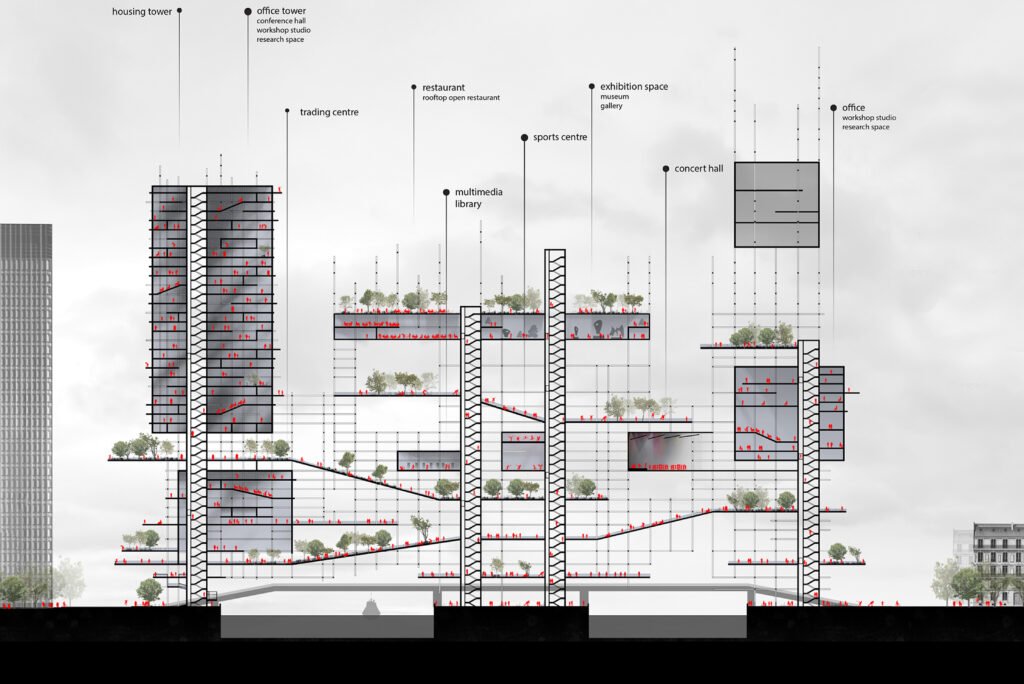Rising above the river, the new tower reimagines the urban skyline by forging a physical and symbolic link between the city’s modern core and its historic heart. More than just a structure, it functions as a Bridge Tower—an inhabited connector that invites people to move across its layered platforms and flowing ramps. Its architecture is defined by a fluid interplay of volumes and voids, spaces designed to remain open, adaptive, and rich with possibility.
Departing from the traditional notion of a singular, monolithic skyscraper, the design fragments the vertical form into a series of suspended volumes. These bold, horizontal elements appear to float in space, projecting outward as if in flight. While the surrounding financial district is dominated by rigid towers rooted firmly to the ground, this tower liberates its mass, creating a sense of lightness, motion, and spatial generosity. Each volume is multifunctional and capable of transformation, housing a diverse mix of programs including offices, residences, cultural venues, public plazas, retail spaces, a commercial hub, and a museum. Together, they form a vibrant, vertical ecosystem—one that reflects the complexity and dynamism of contemporary urban life.
The structure’s vertical grid and porous mesh allow it to breathe, offering a framework that is at once strong and flexible. Open platforms encourage movement and improvisation, and the building’s form is designed to evolve over time. Rather than being a static object, the tower is a living system that can adapt to shifting needs and future uses. These elevated platforms extend the public realm into the sky, blurring the boundaries between building and city, and fostering continuous circulation, spontaneous encounters, and new ways of living and working.
This project represents a transformative step in redefining the identity of the financial district. Moving beyond the static language of glass and concrete, the tower introduces a new architectural sensibility—one that is vibrant, responsive, and deeply human. It is not just a new landmark, but a bold statement about what urban architecture can become: open, alive, and in dialogue with the city it serves.





Leave a Reply